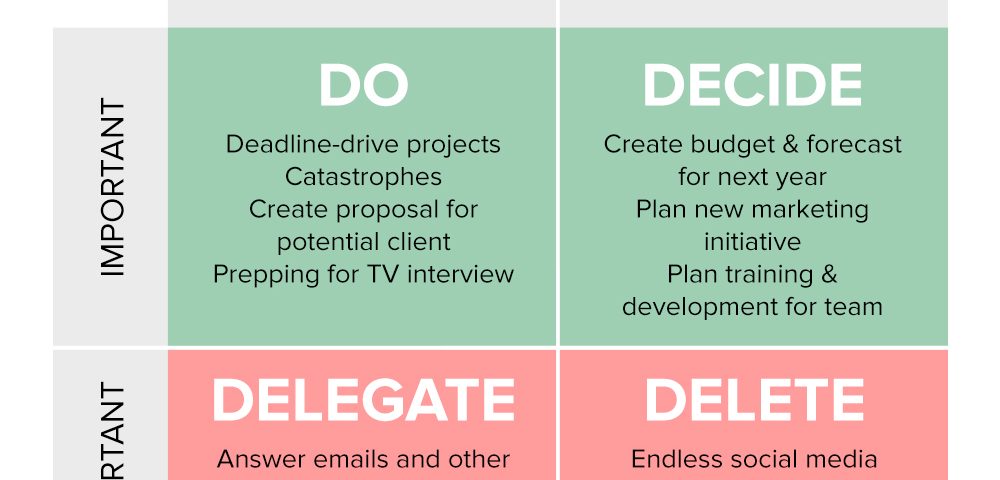- Have any questions?
- 888-432-8878
- steve@sebackground.com
Are you ready to master your calendar and manage your time effectively and efficiently for maximum results? Get more done without distraction using the Eisenhower Matrix.
Dwight D. Eisenhower was the 34th President of the United States, who went on to serve two terms from 1953 to 1961 in the White House. During his presidency, he launched some of the largest public works projects in history: the launch of DARPA, NASA, and the peaceful use of alternative energy sources (Atomic Energy Act).
Before becoming President, Eisenhower served as a general in the United States Army and as the Supreme Commander of the Allied Forces in Europe during World War II.
To prominent management academics and practitioners, Dwight Eisenhower is recognized as one of the greatest management leaders of all time. He devised a system for managing his time and deciding his priorities which later came to be known as the Eisenhower Method. His distinction between being effective and efficient has been a popular time management method for years now. He is quoted as saying:
“What is important is seldom urgent and what is urgent is seldom important.”?
- Dwight D. Eisenhower
Time Management using the Eisenhower Matrix
The Eisenhower Matrix is a 4-square grid with axis representing the level of task urgency and importance. The horizontal x-axis represents the most urgent tasks and the right side the least. The horizontal y-axis represents the level of importance, with the lowest at the bottom and highest at the top.
The end result is the Eisenhower Box made of four quadrants: Important/Urgent. Important/Not Urgent, Unimportant/Urgent, Unimportant/Not Urgent. You can place all your tasks within these boxes.
The Four Quadrants of the Eisenhower Box
To give you a preview of how it can be done we’re created our own rendition of the Eisenhower Matrix.
Your ultimate goal is to spend all of your time doing important tasks. Perhaps, you could refer to Pareto’s 80-20 principle to determine what tasks will generate maximum returns. All tasks in this quadrant are to be dealt with immediately and personally, including important items you could not foresee. E.g. catastrophes, deadlines, etc.
Important/Not Urgent
This could be the most productive area to spend your time more efficiently. The end goal is to learn to manage important tasks so they do not become urgent. All tasks in this quadrant get a deadline and are done personally. E.g. planning, recreation.
Unimportant/Urgent
All tasks in this quadrant are important or urgent to someone else. You can lend a helping hand or schedule a meeting with the delegatees to address all action items in the list. All tasks in this quadrant are delegated. E.g. meetings, activities, interruptions.
Unimportant/Not Urgent
It is important to learn to say no or avoid tasks that fall into this quadrant. In case a task is unavoidable, you must complete it quickly and as efficiently as possible. All tasks in this quadrant are dropped. E.g. Time wasters, pleasant activities.
Why you should use the Eisenhower Matrix
The key benefit to the Eisenhower Matrix is its ease of accessibility and function. The template of this time management method is easy to understand and formulate. It will come in handy whenever you feel overwhelmed with tasks.
Remember, you can only learn to manage your time efficiently if you fully commit to making prioritization and categorization of your daily tasks using the Eisenhower Matrix.
The post Be 10x More Productive Using the Eisenhower Matrix appeared first on The HR Digest.
Source: New feed





